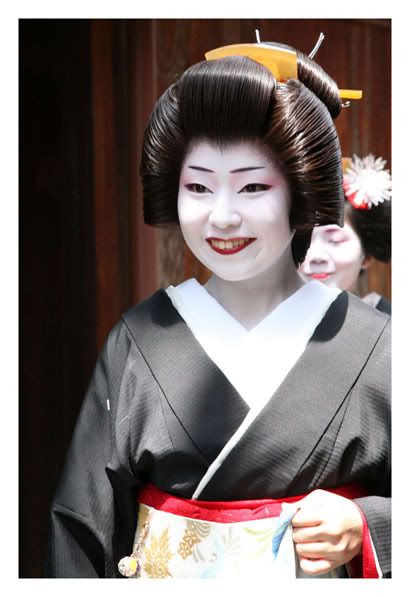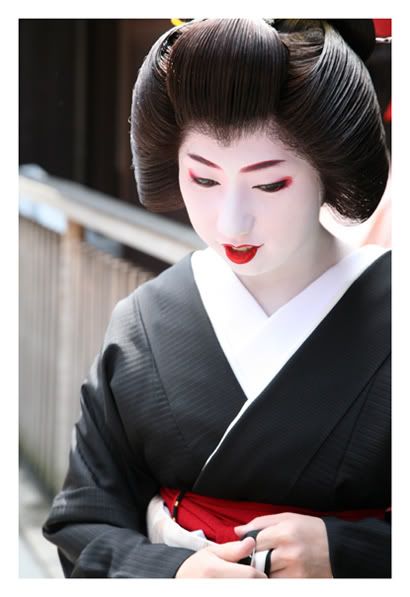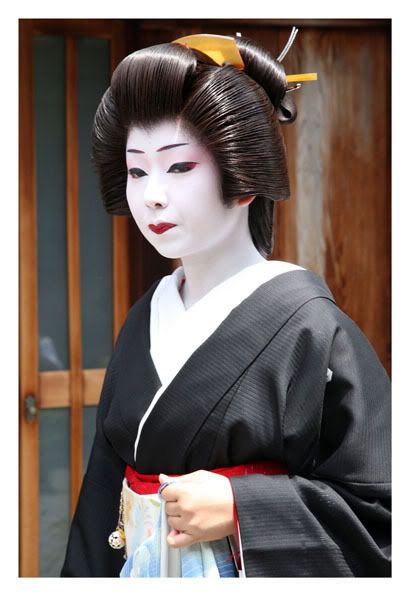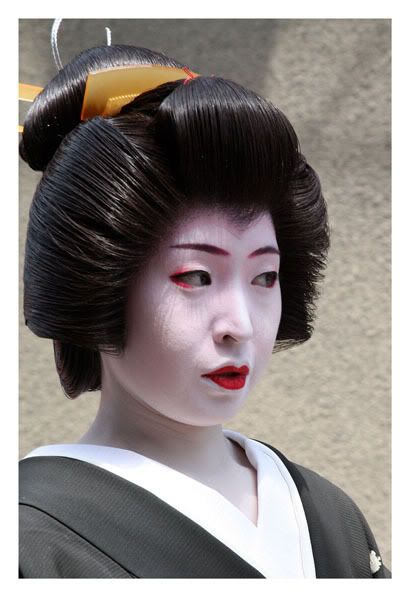Archive for September 2007
Seven Samurai : 七人の侍
Remember how I said this would be the next movie I saw? That was before I found out that Seven Samurai was playing at the Cleveland Institute of Art's Cinematheque . I've been wanting to see it for ages, and the chance to see it on the big screen was just too much for me to bear!
 Could they be any cooler? Maybe... If they were Shinigami! (^_<)
Could they be any cooler? Maybe... If they were Shinigami! (^_<)
This is a great review of the movie.
The archetypal action film, Seven Samurai is also one of the richest works to ever be committed to celluloid. Each of its characters is extraordinarily realized; each has his or her own arc, his or her own vital part to play in the film's slow progression towards its dramatic finale. Kurosawa put the film together using an exceeding degree of artistry; each and every shot, each action sequence, is exquisitely composed; and yet none seems contrived or out-of-place within the overall fabric of the work. Everything is beautifully conceived and in focus, both literally and figuratively.
 When watching Seven Samurai, movie lovers will immediately recognize that several of its key elements can be readily detected in countless similar films made during the last half-century. The audition scenes, in which several samurai are recruited for the difficult task of defending a farming town from a group of bandits, strikes a particularly familiar chord, as do those showing the samurai training the lowly villagers to fight and use weapons. Indeed, the theme of a highly experienced group of "tough guys" taking up the cause of the disenfranchised has become something of an action film cliche, portions of which echo throughout the American western, as well as its progeny (think The Dirty Dozen, The Road Warrior or even television's The A Team).
When watching Seven Samurai, movie lovers will immediately recognize that several of its key elements can be readily detected in countless similar films made during the last half-century. The audition scenes, in which several samurai are recruited for the difficult task of defending a farming town from a group of bandits, strikes a particularly familiar chord, as do those showing the samurai training the lowly villagers to fight and use weapons. Indeed, the theme of a highly experienced group of "tough guys" taking up the cause of the disenfranchised has become something of an action film cliche, portions of which echo throughout the American western, as well as its progeny (think The Dirty Dozen, The Road Warrior or even television's The A Team).What really stands out in Seven Samurai are its characters. They run the gamut, from elder teacher to hopeful youth, stoic warrior to undisciplined brigand. Kurosawa even finds room for a youthful romance, not to mention the mix of poor and beleaguered townspeople he depicts within the setting of the town. Perhaps its no wonder the enemy bandits are virtually faceless-- there is so much conflict and passion present within the group of protagonists, the villains need not be more than a vague threat.
Through it all Kurosawa never forgets who these people are and where they stand in
 comparison to one another. Obviously, the samurai are samurai, while the townspeople are merely peasants, lacking even in funds to pay their noble defenders... The film thus wraps a a portrait of class conflict in a cloak of solidarity. The samurai unite to defend the poor peasants, but the ending is not exactly happy for them. Nor are the peasants completely honorable. We learn, for instance, that they have in the past murdered defeated samurai and looted their bodies, and it becomes apparent late in the film that their claims of poverty are perhaps not as truthful as at first seemed apparent.
comparison to one another. Obviously, the samurai are samurai, while the townspeople are merely peasants, lacking even in funds to pay their noble defenders... The film thus wraps a a portrait of class conflict in a cloak of solidarity. The samurai unite to defend the poor peasants, but the ending is not exactly happy for them. Nor are the peasants completely honorable. We learn, for instance, that they have in the past murdered defeated samurai and looted their bodies, and it becomes apparent late in the film that their claims of poverty are perhaps not as truthful as at first seemed apparent. So why do the samurai defend them so valiantly? For honor? For love of adventure? The answer to this question is left intentionally vague; it is up to each viewer to draw his or her own conclusions. It is to the film's credit that it forces such questions upon us while never allowing them to cause the motivations of its characters to seem untrue...
So why do the samurai defend them so valiantly? For honor? For love of adventure? The answer to this question is left intentionally vague; it is up to each viewer to draw his or her own conclusions. It is to the film's credit that it forces such questions upon us while never allowing them to cause the motivations of its characters to seem untrue...
Hassaku in Gion : Continued! 祇園の八朔

A smiling Suzuha, Gion's most successful geiko. Yes, that's right! More images from Hassaku, my final day in Kyoto, with the promise of still more images to come. What can I say? I am a picture-taking machine! (^_<)
What makes Hassaku so special? Most people would say it's the special sort of "uniform" many maiko and geiko wear for the occasion: Formal black, silk gauze kimono adorned with the family crest of their respective okiya. It is possible, however, to see many senior geiko dressed in lovely, subtley colorful kimono looking every bit as beautiful making their Hassaku visits.

Why? It's true that independent geiko own all of their own kimono, but before earning their indepen- dence, they rely on the collection of the okiya. Since these special silk gauze kimono can only be worn once a year, even independent geiko choose to rent them from the okiya.
In some okiya, however, there are many maiko and geiko. When a large family of maiko and geiko must make their Hassaku greetings together, there may not be enough of these special kimono for them all. In these cases, the most senior geiko gives up her claim on the kimono so that one of her juniors may wear it.

A large family of maiko, led by the geiko Takamaru. The senior maiko, Takahiro (left), holds the umbrella for her big sister as the two youngest maiko wait respectfully. A Shikomi, a young girl "in training" to make her debut as a maiko, closes the door behind them.

In order of rank, from geiko (right) to shikomi (left), the family bows to show their respect. The lower the rank, the deeper the bow.
 Having paid their respects, Takamaru leads the girls to their next stop
Having paid their respects, Takamaru leads the girls to their next stop
Another lovely smile: Takamaru.
Big Dreams Little Tokyo
If I have any say in the matter, this will definately be the next movie I see!
Hmmm... I wonder what that's like.
Anyways, I'm really looking forward to seeing it! Not to mention, his next film, White on Rice! Tonoshimi ne!
If you get a chance, check it out....
For Mr. Takita's sake!














Gion's Hassaku "Uniform": 祇園の八朔の正装
Kosen emerges from a narrow, covered alleyway as she returns to her okiya.
Kotoha and Yasuha headed back to their okiya after a long morning of visits beneath the brutal summer sun.
Kosen and Koyuki slip through a noren, carefully stepping into the street with her black laquered okobo. Kosen wears the typical susuki kanzashi ( Japanese Pampas Grass hair ornament).
Teruyuki also wears the asagao, but as a senior maiko her hair is ornamented with only a single, large blossom.
Mameteru lifts a festive noren as she leaves a teahouse.
Because it is a very formal occasion, maiko leave three tapered prongs of skin bare on their painted white necks, as opposed to the usual two. This is called sanbonashi, or "three legs". Lower ranking maiko wear their hair in the wareshinobu style, characterized by the mage, or top knot, woven through with a peice of silk and topped with a special ornament called a kanko dome.